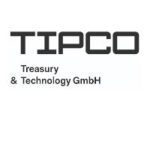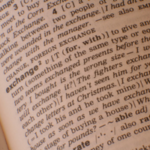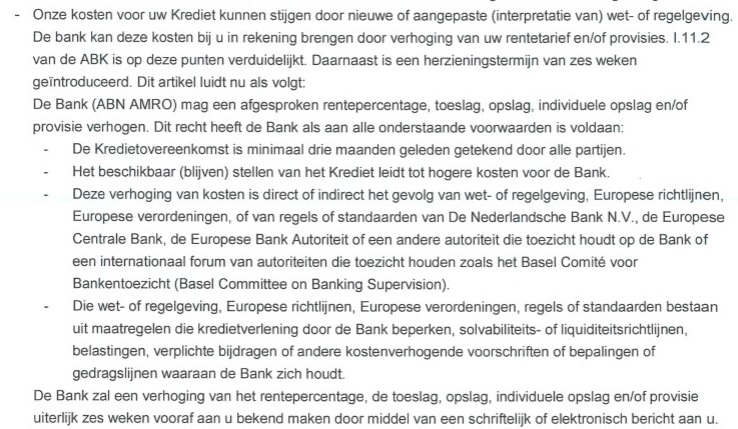| 06-03-2018 | TIPCO | Sponsored content |
 Building on information that is now more readily available than ever before, advances in technology help create new insights for corporate treasurers.
Building on information that is now more readily available than ever before, advances in technology help create new insights for corporate treasurers.
For the last decade or so, many treasury departments have focused on getting their hands on the data required for establishing daily, or at least weekly, visibility of group-wide cash. Countless projects have revolved around collecting electronic bank balance data – think MT940 and others – and considerable time and resources have been invested in automating and speeding-up data retrieval from TMS, ERP, trading platforms and other source systems.
After all, besides bank balances, data on bank and IC loans and deposits, intercompany clearing accounts and other financial positions needed to be incorporated as well to allow for a realistic assessment of the group’s financial status and available headroom. However, reporting based on these data has remained a painful exercise for most treasury teams as it typically involved exporting information from various, isolated data silos to numerous spreadsheets containing a plethora of handcrafted reports. The result: the number of hours spent on consolidating data, updating reports and correcting errors often reached double-digits, on a weekly basis.
The first step: compiling information
In recent years, the provision of relevant data has become much more automated and common place since the goal of having electronic account statements of all bank accounts world-wide centrally available was high on the priority list of many corporates. Very often, this was part of a larger effort to streamline and centralise cash management and payments. In many cases, a TMS was introduced to replace Excel spreadsheets and the treasury modules of popular ERP suites started to offer more sophisticated features, providing corporates with a preference for all-in-one solutions with a viable alternative to a standalone TMS. A mix of tried-and-tested, file-based connectors and more sophisticated web-services allowed for even speedier data interchange between source systems such as TMS, ERP or trading platforms. And any data not centrally available to the treasury department was collected from subsidiaries – facilitated in the best case by easy-to-use, web-based applications. With this kind of information basis established, dedicated treasury reporting solutions were leveraged to achieve close to 100% visibility of cash. At the same time, the rise in business intelligence software allowed end users to easily retrieve data without having to resort to spreadsheets and accessing reports online or even via smart devices became the norm rather than the exception.
The next step: Turning information into insight
For many corporates, these steps were already a big leap forward. But what next, now that all the integration challenges have been mastered and information is readily available? Of course, the ‘data puddles’ turned ‘data pools’ mentioned above can be used for plain and simple financial status reporting. But, given that it is 2018 and self-driving cars will soon hit the road in California: should that really be it? For us, the answer is a clear ‘no’. Today, treasurers have access to a whole new range of applications which make use of information that is now more readily available than ever, and which leverage recent advances in technology such as artificial intelligence to provide value-added services to treasury depart-ments. While we are very careful when talking about ‘revolutions’ in treasury, the advances we want to highlight below surely are a noteworthy evolution. Until recently, data analysis in treasury was still very much a manual task. This no longer needs to be the case as smart tools greatly reduce the time needed for performing even in-depth data analyses, thus allowing more time to be spent on acting on the results of such analyses. Let us take you on a quick ‘tour d’horizon’ using five examples of how smart applications can take your cash visibility to the next level:
1. Policy checks
In a typical treasury policy, one finds numerous rules and regulations relating to the opening of new bank accounts, the maximum allowed number of these accounts, acceptable account purposes, etc. Why not replace email-based processes for new bank account requests with intelligent workflows that not only ensure an end-to-end audit trail, but which also ensure that new bank accounts are automatically fed into all relevant systems such as ERPs, TMS or reporting tools once finally approved.
2. Compliance controls
Combined with smart request workflows as described above, regular, system-supported compliance checks further enhance group treasury’s grip on what is going on around the group. Whether these checks relate to the number, currency or counterparty of bank accounts or other financial positions, or the timeliness of data on authorised signatories in the system, outliers can easily be identified, and compliance can be swiftly restored.
3. Fraud detection
When electronic account statements are merely used as a means of importing end-of-day balances, much of their potential is lost. Based on smart search patterns, data provided as part of the remittance information can be used for valuable insights: Where in the group do frequent cash-based transactions occur? Banks’ business transaction codes (BTCs) or other related text snippets can point you in the right direction and responsible, local or regional finance staff can be notified automatically, using workflow-based notification processes so the background and soundness of such cash movements can be checked.
4. Performance KPIs
KPIs as a means of systematically measuring treasury performance are high on the agenda of many of the more advanced treasury departments out there. Whether they relate to the efficiency of core treasury processes (think request and approval workflows once again) or to other indicators such as the overall number of bank accounts, the percentage of accounts included in cash pooling arrangements, the share of trapped cash in overall cash – to name only a few basic KPIs: a well-compiled set of such figures that covers not only cash management but other areas as well – presented in the form of a clearly laid out KPI dashboard, finally provides the treasurer with a strategic steering wheel.
5. Bank fee controlling
You wonder what bank fee controlling has to do with cash visibility. The short answer: everything. Regular, system-supported bank fee analysis is not only about penny pinching but equally about developing an in-depth understanding of what is going on further up the process chain. A strikingly high number of fax payments in a country where you wouldn’t expect them? Fees titled ‘Others’ which amount to thousands of euros every month? If nowhere else, then you’ll find this information in the electronic fee statements (e.g. camt.086) provided by your bank. A smart analysis tool allows you to interactively drill down from cruising altitude to the line item level and within minutes you can reach out to either your bank’s customer service, your subsidiary or both to clarify what’s going on.
If you would like to know more and find out how technology can help you go one step beyond cash visibility and ease your daily life as a treasurer, get in touch with us. We are looking forward to helping you unleash your data’s full potential.
 TIPCO Treasury & Technology GmbH
TIPCO Treasury & Technology GmbH
[button url=”https://www.treasuryxl.com/community/companies/tipco-treasury-technology-gmbh/” text=”View company profile” size=”small” type=”primary” icon=”” external=”1″]
[separator type=”” size=”” icon=””]
 On 15th March 2018, Unilever announced its decision to domicile its headquarters exclusively in the Netherlands. This will lead to Unilever having a single legal base for the first time. Traditionally, Unilever had 2 holding companies – Unilever NV, registered and domiciled in Rotterdam the Netherlands, and Unilever PLC, registered and domiciled in Port Sunlight, England. There were 2 head offices – one in Rotterdam and the other in London. Unilever was formed in 1930 by the merger between Margarine Unie and Lever Brothers and has a dual listing in both the AEX and the FTSE index. The 2 companies operate as a single business. What are the reasons behind this decision and what are the consequences?
On 15th March 2018, Unilever announced its decision to domicile its headquarters exclusively in the Netherlands. This will lead to Unilever having a single legal base for the first time. Traditionally, Unilever had 2 holding companies – Unilever NV, registered and domiciled in Rotterdam the Netherlands, and Unilever PLC, registered and domiciled in Port Sunlight, England. There were 2 head offices – one in Rotterdam and the other in London. Unilever was formed in 1930 by the merger between Margarine Unie and Lever Brothers and has a dual listing in both the AEX and the FTSE index. The 2 companies operate as a single business. What are the reasons behind this decision and what are the consequences?
 Met het huidige nieuws rond beursgangen (IPOs = initial public offering) heb ik gezocht op het steekwoord beursgang op treasuryXL en vond geen resultaten. Wellicht omdat de treasury beroepsgroep communiceert in het Engels. Voor Non-Treasurers ga ik bij deze kort in op de basisbeginselen van een beursgang en waarom hier zoveel aandacht voor bestaat.
Met het huidige nieuws rond beursgangen (IPOs = initial public offering) heb ik gezocht op het steekwoord beursgang op treasuryXL en vond geen resultaten. Wellicht omdat de treasury beroepsgroep communiceert in het Engels. Voor Non-Treasurers ga ik bij deze kort in op de basisbeginselen van een beursgang en waarom hier zoveel aandacht voor bestaat.
 Treasury Intelligence Solutions GmbH (TIS)- a partner of treasuryXL, are organising a very engaging event that is being held in Amsterdam on Tuesday 27th March 2018, for corporate treasury. We have been kindly invited to attend and shall report back to you later, with our thoughts and experiences on what promises to be an interest evening. Read on for more information about this event and sign up if you find this event relevant to you and your company.
Treasury Intelligence Solutions GmbH (TIS)- a partner of treasuryXL, are organising a very engaging event that is being held in Amsterdam on Tuesday 27th March 2018, for corporate treasury. We have been kindly invited to attend and shall report back to you later, with our thoughts and experiences on what promises to be an interest evening. Read on for more information about this event and sign up if you find this event relevant to you and your company. On Tuesday 13th March 2018, RTL Z – a television channel – broadcast a “Cryptoshow” to explain how the Blockchain works and what it could mean for the future. They attempted to make the technology and information as simple as possible to show what uses the Blockchain could have in the world for consumers and businesses. One of the main areas of interest relates to Smart contracts. What are they? What are the advantages and disadvantages? What changes can they bring?
On Tuesday 13th March 2018, RTL Z – a television channel – broadcast a “Cryptoshow” to explain how the Blockchain works and what it could mean for the future. They attempted to make the technology and information as simple as possible to show what uses the Blockchain could have in the world for consumers and businesses. One of the main areas of interest relates to Smart contracts. What are they? What are the advantages and disadvantages? What changes can they bring? Whenever entering into transactions with banks, both parties need to know and understand what they are trading. A relatively simple transaction like a FX spot has few terms – you buy one currency against selling another currency at an agreed rate and an agreed settlement date. The only other major factor relates to where the settlement has to take place – on what bank account are you receiving and to what bank account do you have to pay the counter currency.
Whenever entering into transactions with banks, both parties need to know and understand what they are trading. A relatively simple transaction like a FX spot has few terms – you buy one currency against selling another currency at an agreed rate and an agreed settlement date. The only other major factor relates to where the settlement has to take place – on what bank account are you receiving and to what bank account do you have to pay the counter currency. 


 In the last week, 3 Dutch companies have announced that they will be floating on the stock exchange via Initial Public Offerings (IPOs). Alfen – an energy storage company; B & S – a cosmetics wholesaler; and NIBC – fifth largest Dutch bank in terms of assets. In America, Dropbox and Spotify, among others, are looking to float. Future issues in the Netherlands are expected to include Leaseplan, Varo Energy and Ayden. It is a very busy start to the year for investment banks with plenty of activity in IPOs and mergers and acquisitions (M&A). Here is a summary of how an IPO works.
In the last week, 3 Dutch companies have announced that they will be floating on the stock exchange via Initial Public Offerings (IPOs). Alfen – an energy storage company; B & S – a cosmetics wholesaler; and NIBC – fifth largest Dutch bank in terms of assets. In America, Dropbox and Spotify, among others, are looking to float. Future issues in the Netherlands are expected to include Leaseplan, Varo Energy and Ayden. It is a very busy start to the year for investment banks with plenty of activity in IPOs and mergers and acquisitions (M&A). Here is a summary of how an IPO works.


 Corporate governance is the rules and processes by which a company is controlled and directed. It is a balancing mechanism between different stakeholders – directors, shareholders, management, government, external financiers etc. The treasury function performs highly skilled and complex tasks to ensure continued and harmonious execution of all cash related functions. At the same time, there is much interaction with both internal and external stakeholders. The corporate governance within the treasury function should always be performed in accordance with predetermined and approved metrics as laid out in Treasury statutes. This means undertaking operations that are consistent with the governance within the corporation.
Corporate governance is the rules and processes by which a company is controlled and directed. It is a balancing mechanism between different stakeholders – directors, shareholders, management, government, external financiers etc. The treasury function performs highly skilled and complex tasks to ensure continued and harmonious execution of all cash related functions. At the same time, there is much interaction with both internal and external stakeholders. The corporate governance within the treasury function should always be performed in accordance with predetermined and approved metrics as laid out in Treasury statutes. This means undertaking operations that are consistent with the governance within the corporation. Building on information that is now more readily available than ever before, advances in technology help create new insights for corporate treasurers.
Building on information that is now more readily available than ever before, advances in technology help create new insights for corporate treasurers.  TIPCO Treasury & Technology GmbH
TIPCO Treasury & Technology GmbH
